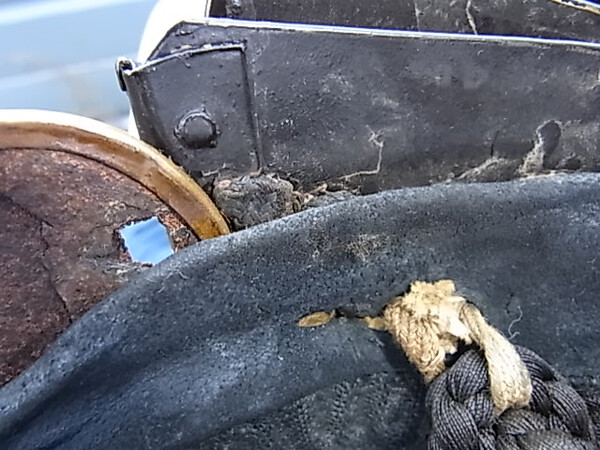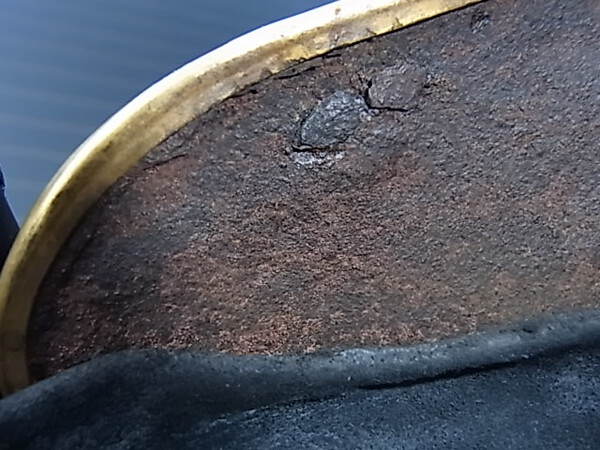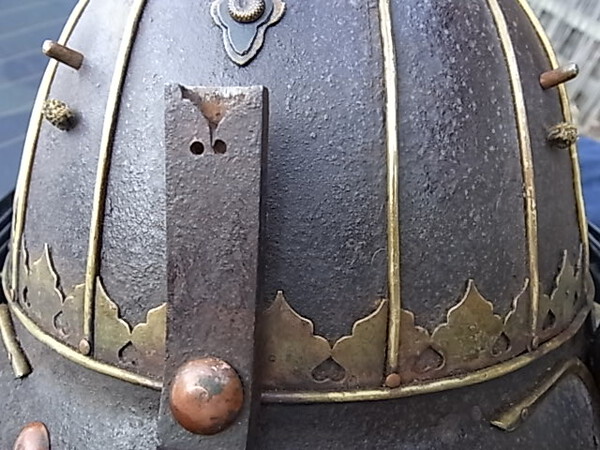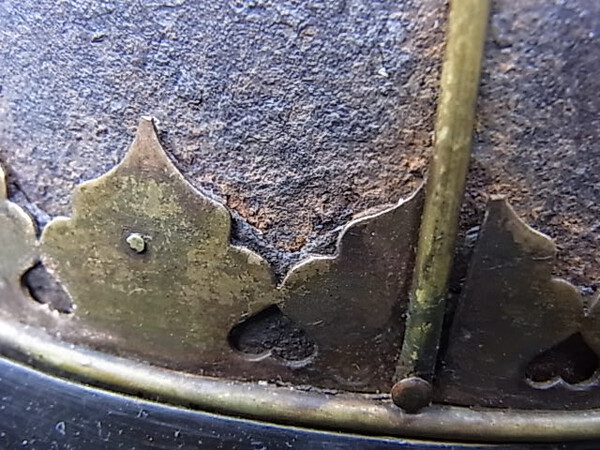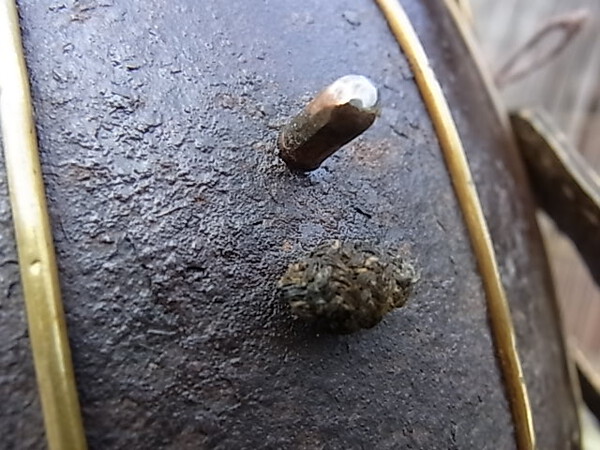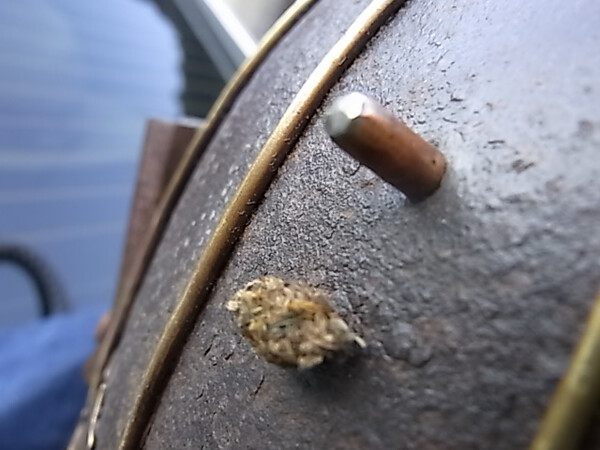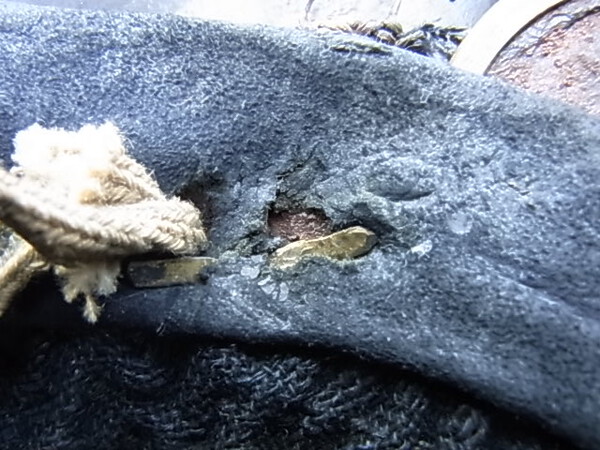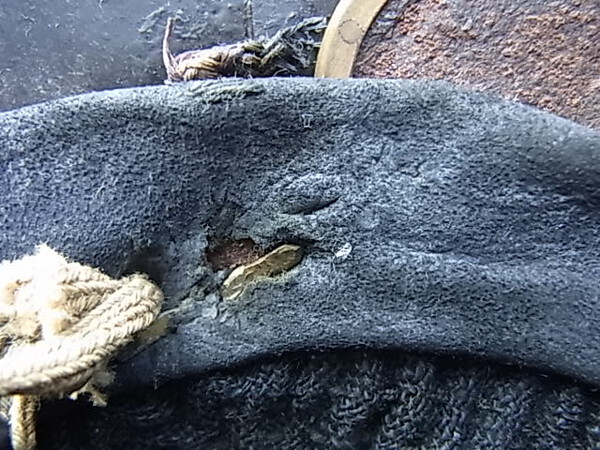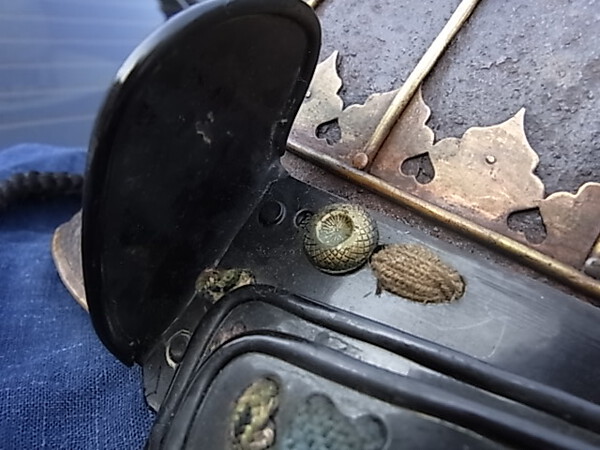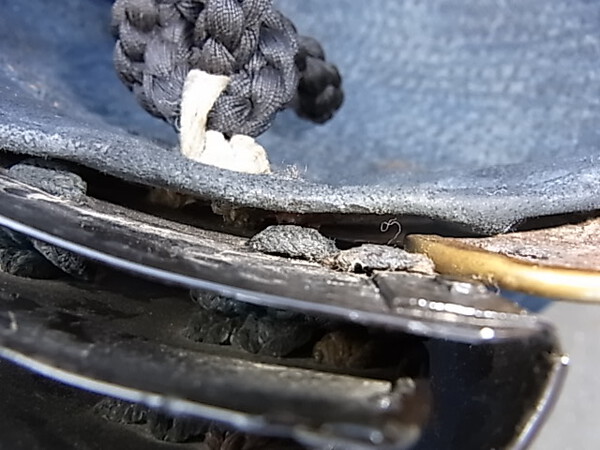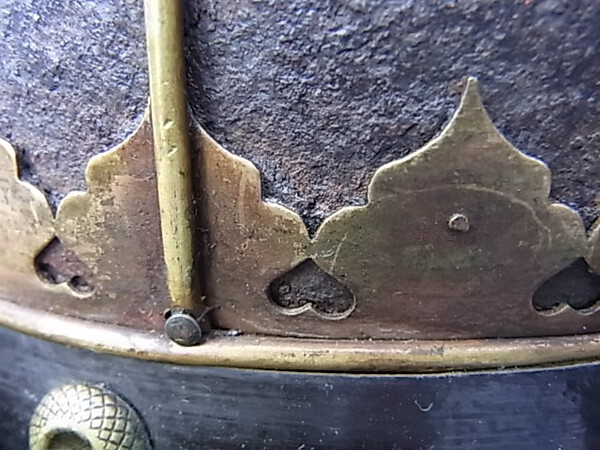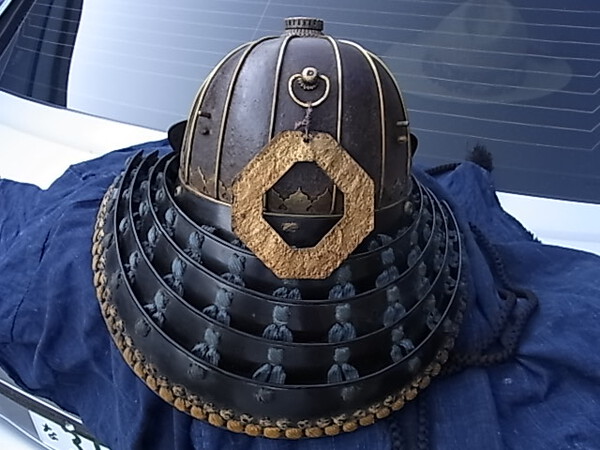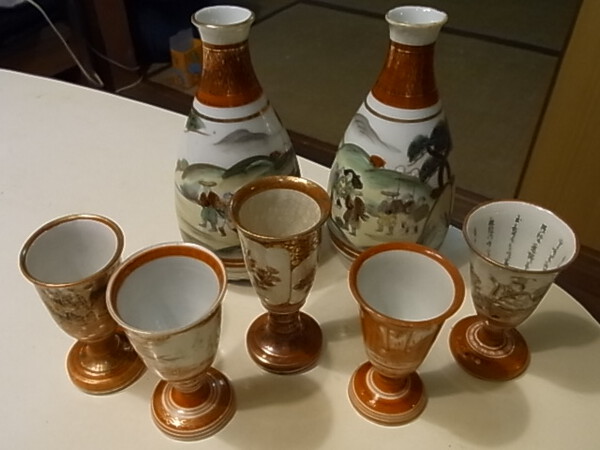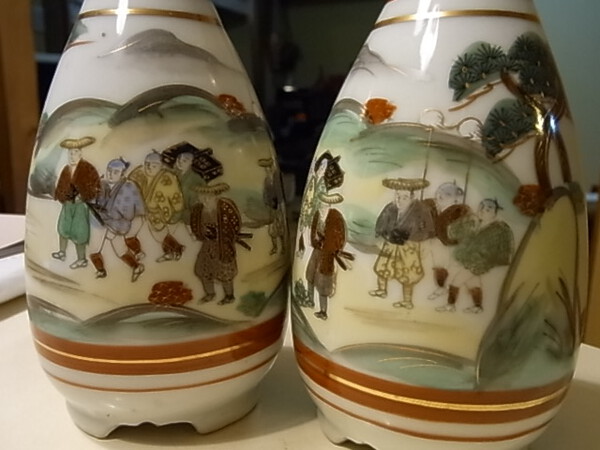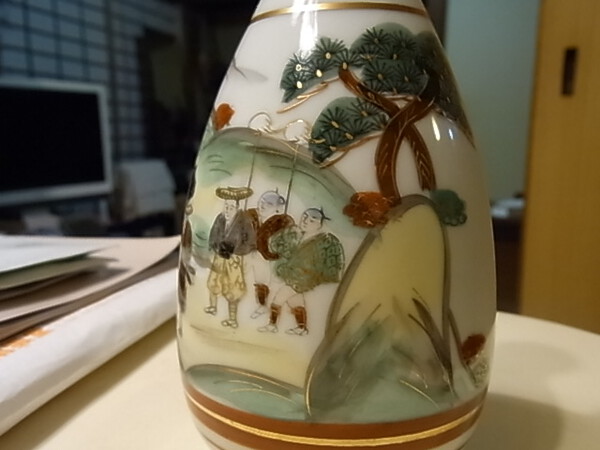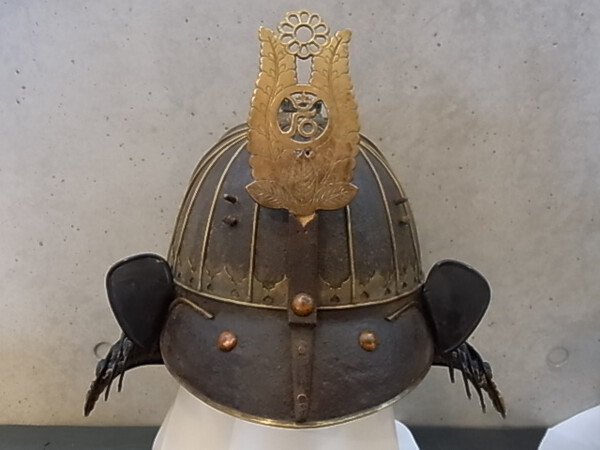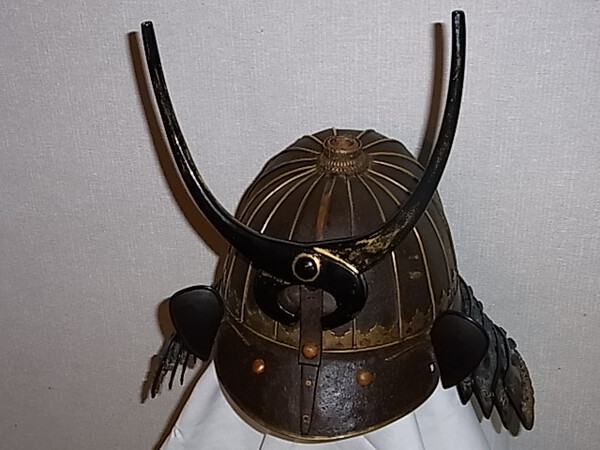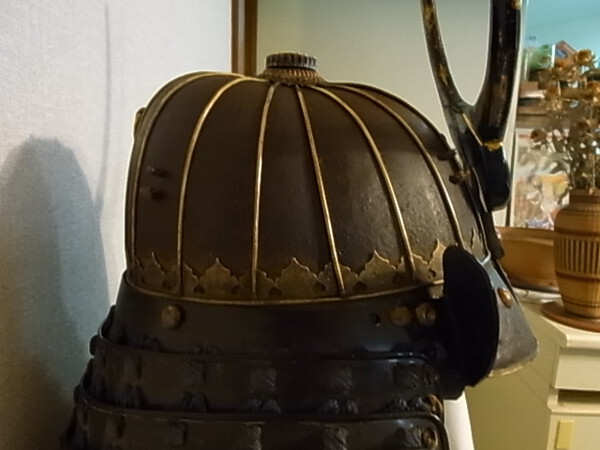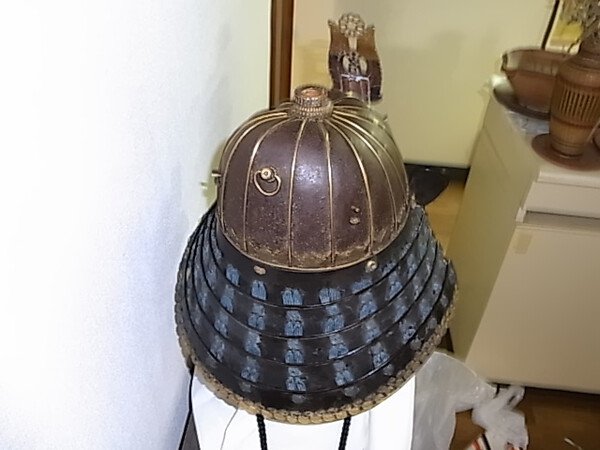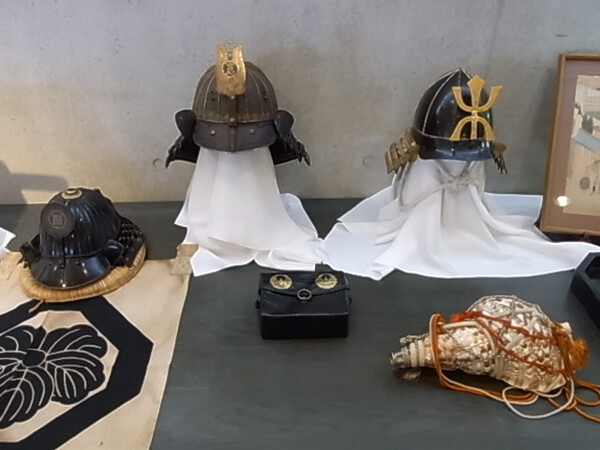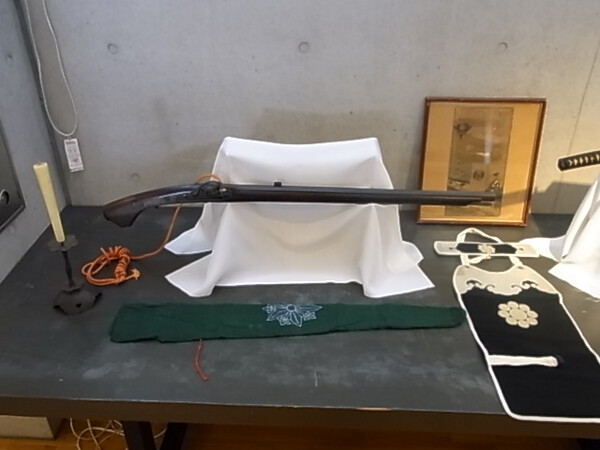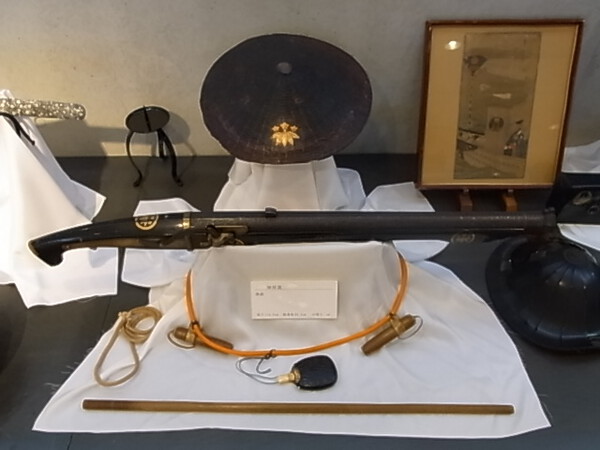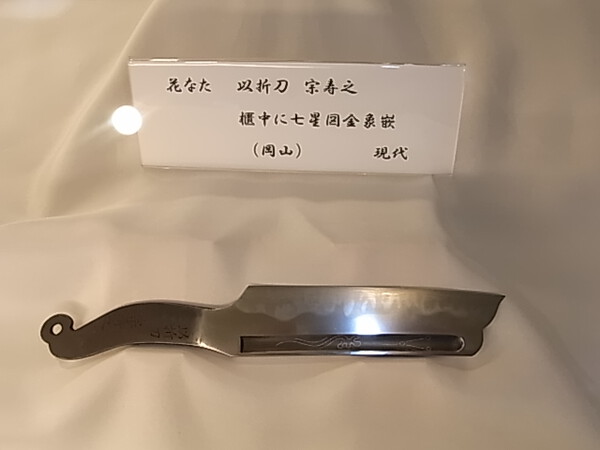-
Posts
14,156 -
Joined
-
Last visited
-
Days Won
265
Content Type
Profiles
Forums
Events
Store
Downloads
Gallery
Everything posted by Bugyotsuji
-
-
Hmmmm..... Almost everything is covered with leather, but you can just see a window of rust underneath in the following shots. Try to imagine the camera angle where I have shot under/behind the Fukigaeshi, between the hachi and the Shikoro. In an external shot you can see two small holes through the Higaki, indicating a previous life? I cannot see any evidence that it was once covered in lacquer, Ian, although the thought had also crossed my mind; I have tried to show the layers of packed rust behind the Higaki. I have included a shot of the helmet from behind with the Shirushi hanging from the rear Kan.
-
Luc, you have had to ask twice. Apologies. I will go home now and see if I can get a differently-angled shot for you. (Just gave a talk on Teppo, Teppo-tai and Japanese culture at one of the area Rotary Club luncheons. Lots of exchanging of name cards. Decorated a draped side table with guns, artefacts and hand-outs. Generally well received.)
-
Many thanks Ian and others for the further thoughts. Many hachi were adapted again and again for later generations, so combined with the newer Fukigaeshi and Shikoro, this theory fits well. There are two further people I am planning to consult, and with luck I hope to be able to confirm or further embellish the fascinating ideas that have appeared above so far. I wore it yesterday for four hours at a Matsuri over on the San-In coast - two matchlock demonstrations and a 4 km footdragging Gyoretsu - and it was generally well received by our 25-odd members. I have hung a Shirushi from the agemaki-no-kan at the back which may have diverted people's attention... What is strange is that Japanese artisans do not usually make mistakes like this. Could it really have been a mistake? Or was it deliberate, and if so, why on earth? Soaked in sweat, my armour is Fabrezed and slowly drying off at home right now.
-
This is on a scroll held by a Kuge 公家 courtier (?), a standing ivory Okimono. Can anyone read it? (He seems to be holding a branch of cherry blossom? in his left hand) http://netsuke.websitetoolbox.com/file?id=1402987 http://netsuke.websitetoolbox.com/post/ ... ostcount=6
-
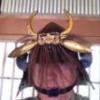
Muromachi Period Dates Confusion
Bugyotsuji replied to Tcat's topic in General Nihonto Related Discussion
One can also look at the other end and consider the Azuchi-Momoyama period as being the Oda Nobunaga - Toyotomi Hideyoshi period, a time when Japan started to really draw together under a quick succession of strong leaders. http://en.wikipedia.org/wiki/Azuchi%E2% ... ama_period If Momoyama was named after Hideyoshi's Momoyama castle built on the hill with Momo orchards growing there, then Momo, heart, Inome designs in artifacts and architecture come to symbolize that era, a gorgeous flourishing time after the dark ages of Muromachi... -
Justin, I used a bone spatula to prise off the loose rust flakes and a damp towel to mop off the rust dust. Later, when dry, I applied olive oil and then rubbed repeatedly with a soft linen cloth. Now I am tempted to go back and use Ian's bubbling cauldron mix... AU60, Luc, you are quite right about the odd placement of the shiten no byo! I never noticed. Strange. Will have a look to see if I can get a shot of the inside of the koshimaki. The inside has been relined. The underneath of the very thin mabisashi is moonscape tetsu sabiji.
-

Edo Period Corner Part II
Bugyotsuji replied to estcrh's topic in General Nihonto Related Discussion
Just for fun here are two matching Kutani-ware Tokkuri I found not too long ago. I do not think they are very old, but I like the design of the travelling samurai group. Hard to photo all the way round, so I allowed one to pick up where the other left off. -
Recently I part-purchased part-swapped a battered and rusty Kabuto for use in matchlock displays. (The one I had was an Edo adaptation of a Zunari helmet, covering the steel with black urushi and neri to give the impression of 32 ken suji. It was pretty to look at but a bit small and did not really pass the age test.) This recent purchase is either a pre-teppo Muromachi Ushiro-kachiyama (Akoda style) hachi, or an Edo replica. Which, I wonder? The person who sold it to me said that although the shikoro looks to be a later addition, the hachi itself is quite light and made of extremely thin plates, indicating an ignorance of guns and bullets. In addition it has Higaki around it. I can attest to the thinness of the steel. While cleaning it I knocked a hole through the mabisashi. The oval flake of iron is thinner than my little finger nail. The photos below show the helmet after someone else's cleanup job, and then following criticism of its dry and listless look, after my clean.
-
Great drawings. A friend has a huge collection of Kawari kabuto, and over a hundred menpo unusual in one way or another..
-
Mine is somewhat similar. An expert on armour told me it was probably made around the end of Momoyama, beginning of Edo, but he was also using the narrowness of the shikoro to guide him. People tend to call pointed ones with upright sections "Toppai" (pronounced 'top pie'), and they were popularly imitated into Edo, according to Sasama Sensei.
-
Well, the first coins minted in 1668 had almost that exact design on them, but the slight differences over the years are only noticeable once they've been pointed out. Further mintings took place in 1700, 1708 and 1714, and then the design on the back starts to change.... and that's where I lose the plot! :lol: Your coin may be cheap but it's a pretty example. I carry a few in a coin purse just to remind me of how they might have looked when they really did rub against each other.
-
Well, what else do you know about it? Notice the rim is quite wide. What is written on the frame? What did the dealer tell you? Can you post a shot of the back as that sometimes proves something, such as the shape of the 文? I have just spent half an hour looking at seven pages of Kan Ei Tsu Ho and I'm feeling a bit dizzy.
-
It sounds as though you are slightly ahead of where I am, Chris! The Bun is actually read Mon for coins; it means it is a single cash coin, "Ichi Mon Sen" 2.3cm in diameter. The ones with waves were 4-Mon coins, 2.8 cm across. Single Mon Kan-ei-tsu-ho were minted from 1636 till 1862. Yon Mon Sen were minted from 1768 onwards in either copper or brass. Cash coins were used for everyday purchases; you could have your treasured gold or silver blobs weighed at special exchanges in order to get bags of such everyday money, I understand. As to books, I started reading Japanese material but the depth of detail was bewildering so I gave up. The width of the edging tells something. The style of the Kanji strokes may determine both the date and the value today. Good luck! Oops, I have just opened Koichi San's link above! Read that first!!!
-
Does the back have waves on it, or 文?
-
Overpolished is my guess too: a pity. Agree with Alan here.
-
Unusual shell design. As to quality, I'd say very good. Love the Cho-tsugai, - butterfly hinges.
-

Nihon-to Magazine
Bugyotsuji replied to Clive Sinclaire's topic in General Nihonto Related Discussion
Wonderful. Congratulations on making it all come together. -
The horsey word "Shiode" is how they ended up being pronounced, but originally they were shi-ho = four directions + te = hands (handles). Unusual design for Menuki, as Ian says.
-

Edo Period Corner Part II
Bugyotsuji replied to estcrh's topic in General Nihonto Related Discussion
-

Tessen / gunsen / gunbai
Bugyotsuji replied to md02geist's topic in General Nihonto Related Discussion
Thanks all for the words of encouragement. Here is the original thread from 4 years ago when my photography skills were obviously lacking. Silver sun on one side (now black) and red sun on the other. One of the bamboo ribs is split, and the black paperwork is very fragile. viewtopic.php?f=15&t=4144&p=31219&hilit=tessen#p31219 -

Tessen / gunsen / gunbai
Bugyotsuji replied to md02geist's topic in General Nihonto Related Discussion
My Tessen is old but in pretty bad condition. It does not have the lovely silver inlay of Ron's but it does have a Mei cut in the iron. Is it worth the price of restoration? Part of me says yes, for purely historical reasons, but it would be altruism towards the past, a sense of responsibility to stop or slow further degradation. Certainly a nice object to have in one's collection. -

Edo Period Corner Part II
Bugyotsuji replied to estcrh's topic in General Nihonto Related Discussion
Glad you enjoyed them Jan. Spent the evening framing a couple of Ukiyo-e to take tomorrow. Should I take my last hold-out guns or not? Hmmm... -

Edo Period Corner Part II
Bugyotsuji replied to estcrh's topic in General Nihonto Related Discussion
Oh, what the hell, a couple more from the first day for luck! And these are before the swords and tsuba... (interestingly I was struck by how some of the modern work being shown by these young and upcoming artists can be just as good in its own right as anything produced centuries ago. Talent is talent. Genius is genius. Such work transcends time and place.)


